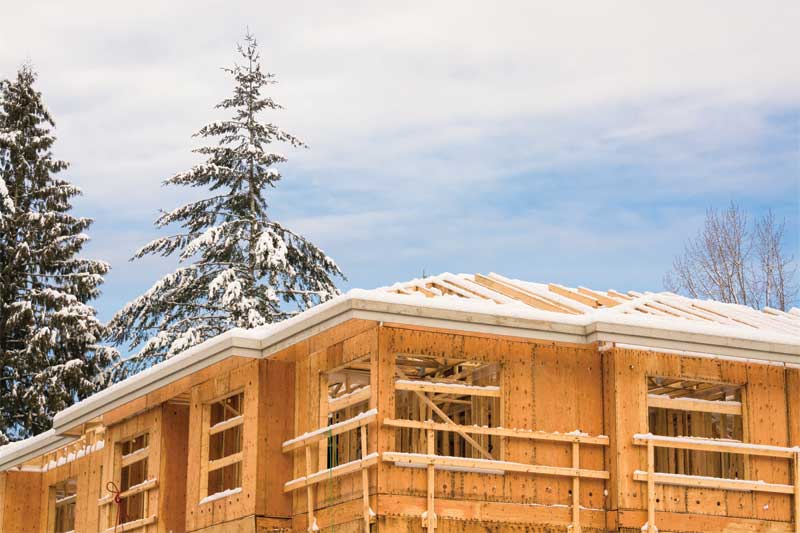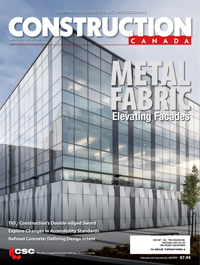Membrane roof systems serving as air barriers

By Joan P. Crowe, AIA
For commercial buildings, membrane roof systems can serve as part of an air barrier system. While this is common practice, questions still arise on how to design, specify, and install an effective air barrier system. To assist readers in grasping air barrier concepts, this article covers the basic building science principles, discusses code requirements in commercial buildings, and explores how continuous air barrier concepts relate to membrane roofs.
Air barrier basics
The primary function of an air barrier is to prevent or restrict air leakage through a building’s envelope. Air barriers are intended to control air flow from the exterior to the interior of a building and vice versa.
An air barrier needs to be installed continuously on all sides of a building (i.e. ‘wrapping’ the entire building thermal envelope as depicted in Figure 1). For an air barrier to function properly, it has to:
- meet permeability requirements;
- be continuous when installed;
- accommodate dimensional changes; and
- be strong enough to support the stresses applied to it.
An air barrier is not a single product or material. Rather, it is a combination of materials assembled and joined together as a system to provide a continuous barrier to air leakage through the building envelope. Its effectiveness can be greatly reduced by openings and penetrations, even small ones. These openings can be caused by poor design and workmanship, damage from other trades, improper sealing and flashing, and mechanical forces, along with aging and other forms of degradation.
The National Research Council of Canada (NRC) collected research data that illustrates how even small openings can affect overall air leakage performance. For example, only about 0.3 L (one-third of a quart) of water diffuses through a continuous 101 x 203 mm (4 x 8 in.) sheet of gypsum board during a one-month period even though it has a high permeance.
However, if there is a 645 mm2 (1-si) hole in the same sheet, 28.4 L (30 quarts) of water can pass through the opening as a result of air leakage, as illustrated in Figure 2. This example illustrates air leakage can cause more moisture-related problems than vapour diffusion.
The specified slider id does not exist.
Air barrier vs. vapour retarder
When discussing air barriers and building envelopes, another important topic comes to mind—vapour retarders. There is often confusion between air barriers and vapours retarders. A vapour retarder is frequently called a ‘vapour barrier’ and this contributes to the mix-up. The purpose of a vapour retarder is to minimize or reduce water vapour diffusion into a low-slope roof or wall system. In other words, it is used to prevent the formation of condensation in a low-slope roof or wall system.
Generally speaking, a vapour retarder is used where a building’s interior humidity is expected to be relatively high, and the building is located in a cold climate. It is commonly installed on the warm (interior) side of a roof or wall. In a low-slope roof assembly, the vapour retarder is normally installed under the primary roof insulation. Therefore, one often sees it installed directly on a roof deck (e.g. concrete or wood deck) or on a continuous substrate (e.g. gypsum board and wood panels) installed directly over a metal deck. Conversely, in certain warm, highly humid places, vapour retarders are installed on, or near, the exterior side of roofs and walls of air-conditioned buildings.



